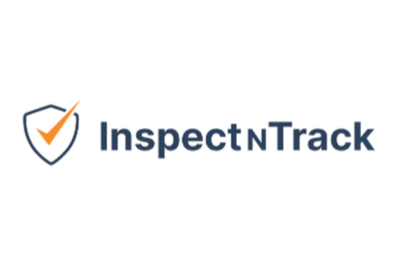Fire and life safety inspections are a crucial aspect of creating a safe environment. One way they can be enhanced is through the use of fire equipment inspection checklists. This article explains what fire equipment inspection checklists are and why they can provide value. Read on to uncover 4 of the potential benefits of utilizing checklists in inspections.
What are Fire Equipment Inspection Checklists?
A fire equipment inspection checklist is a detailed document used to systematically verify the condition and functionality of various fire safety equipment within a facility. It includes specific criteria and steps for inspecting items such as fire extinguishers, sprinkler systems, fire alarms, emergency lighting, and exit signs to ensure they are in proper working order and compliant with safety regulations. Regular use of this checklist helps to identify potential issues before they become serious hazards, ensuring that all fire safety equipment is ready to perform effectively in an emergency situation.
Why Checklists are Better Than The Pass/Fail Method
Most companies assess their equipment on a pass/fail basis during fire safety inspections. However, if your equipment fails the test, you may find yourself rushing to implement repairs, replacement, or maintenance. Unfortunately, solely relying on a Pass/Fail system will not help you avoid last-minute repairs.
If the goal is to maintain top-notch equipment, reduce maintenance costs, and maximize safety, consider setting customized fire equipment inspection checklists. Customized checklists are detailed inspection checklists that you can tailor towards each type of fire equipment in your business. Using fire equipment software makes it easy to develop these custom lists while boosting the efficiency of your inspection process.
Read on to discover four reasons why customized fire equipment inspection checklists are better than relying on the pass/fail system.

4 Advantages of Using Fire Equipment Inspection Checklists
Though there are a multitude of potential advantages to incorporating fire equipment inspection checklists into your company’s safety programs, this article dives into 4 main benefits.
Checklists can be helpful, because they:
- Promote preventative maintenance
- Encourage accurate record keeping
- Make safety equipment more accessible
- Help with maintaining regulatory compliance
Read on to learn more about each of these benefits.
1. They Encourage Preventative Maintenance
Equipment maintenance can be a headache if you are not on top of things. Rather than waiting for your fire extinguishers, sprinkler systems, or control valves to fail an inspection, consider preventative maintenance. Preventative maintenance involves continuously tracking the status of your equipment to evaluate performance. If you notice any warning signs, you can develop a maintenance plan before your equipment becomes faulty.
Using customized inspection checklists is an excellent way of practicing preventative maintenance. With customization, you can include questions that address key safety indicators. Your custom checklist may cover any of the following areas:
- Fire alarm response time
- Fire extinguisher accessibility
- The water pressure of safety showers
- Sprinkler system location
2. They Promote Accurate Record-Keeping
A detailed and customized checklist simplifies record keeping. Fire equipment inspection checkists provide an audit trail that you can rely on to identify safety concerns. Fire inspection records create a reliable trail for identifying safety issues and act as valuable repositories of information to enhance organizational efficiency.
Thanks to fire inspection software, businesses no longer have to incur high costs when keeping detailed records. In fact, fire inspection software contains customizable dashboards that digitally capture your entries over time. Not only can you scan barcodes to access data quickly, but you can also check your equipment against custom inspection checklists to deliver insightful reports. The more specific your lists are, the more insight you can uncover during fire safety inspections. Automation within the software also reduces time and cost during each inspection exercise.
3. They Increase Equipment Accessibility
A common challenge with fire safety equipment is accessibility. Even if your equipment is well maintained, you may still encounter problems if users can’t access fire safety tools. Accessibility will vary from one establishment to the next. For example, you may need additional lighting installed near safety showers and fire extinguisher cases if you have dimly lit hallways.
A custom inspection checklist will increase access to your fire safety tools. You can also share these lists with your employees to prevent them from blocking access to essential safety equipment.
4. They Ensure Legal Compliance
Finally, custom inspection checklists help you maintain legal fire safety standards, such as those established by the NFPA. While a pass/fail system is also based on legal requirements, you can go above and beyond the minimum regulations to show your customers and employees how much you value their safety.
An effective approach is to have your checklist cover the inspection process, maintenance, and testing of equipment. An all-inclusive approach ensures the quality of your fire equipment while remaining over-compliant with fire safety laws.
Maintaining high-quality fire safety tools has become easier and less costly thanks to fire equipment software. In particular, the InspectNTrack software has innovative tools to help you develop custom checklists that meet the needs of your business.
Contact us today to learn how our software can revolutionize your fire safety inspections.
How InspectNTrack Can Help
Though there are many advantages to using custom inspection checklists, it can be time consuming to create them. This tends to dissuade companies from investing in making their own templates. Rather than make templates, organizations will instead choose the pass/fail method when performing their inspections. As a result, these organizations miss out on the previously mentioned benefits of checklists, along with taking on greater risk of their safety equipment malfunctioning.
However, InspectNTrack is here to help! Our inspection software allows users to build custom checklists within minutes, both on a mobile device or desktop. This helps save time and increase efficiency. Additionally, we offer pre-built NFPA compliant checklists for people who need help getting started or don’t want to build their own. These NFPA checklists can help ensure that safety measures are up to date and aligned with current safety regulations, preventing legal issues and hefty fines for violations.
To learn more about InspectNTrack software and how it can provide you with adequate fire equipment inspection checklists, request a demo. Our team of safety professionals are eager to answer questions and help you determine if our software fits your needs!
Conclusion
One way to enhance fire safety and inspection quality is by using fire equipment inspection checklists. These checklists are tools that allow the user to perform a more thorough assessment of fire equipment. A benefit of using these checklists is that rather than simply relying on the pass/fail method, companies can more proactively prevent fires. Additionally, fire equipment inspection checklists promote accurate record keeping, give workers easier access to fire safety equipment, and help ensure legal compliance with established safety regulations. To help companies enjoy these benefits, InspectNTrack offers software with capabilities to quickly build a custom checklist or even use pre-made NFPA compliant lists. Elevate your company’s safety today with fire equipment inspection checklists!

